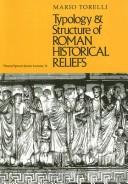| Listing 1 - 10 of 178 | << page >> |
Sort by
|
Book
ISBN: 9783954904402 Year: 2019 Publisher: Wiesbaden : Reichert Verlag,
Abstract | Keywords | Export | Availability | Bookmark
 Loading...
Loading...Choose an application
- Reference Manager
- EndNote
- RefWorks (Direct export to RefWorks)
Book
ISBN: 9783925630668 392563066X Year: 1991 Publisher: Hamburg: Kovač,
Abstract | Keywords | Export | Availability | Bookmark
 Loading...
Loading...Choose an application
- Reference Manager
- EndNote
- RefWorks (Direct export to RefWorks)
Book
ISBN: 0472100149 Year: 1982 Publisher: Ann Arbor University of Michigan press
Abstract | Keywords | Export | Availability | Bookmark
 Loading...
Loading...Choose an application
- Reference Manager
- EndNote
- RefWorks (Direct export to RefWorks)
Book
ISBN: 9783805333450 3805333455 Year: 2004 Publisher: Mainz am Rhein: von Zabern,
Abstract | Keywords | Export | Availability | Bookmark
 Loading...
Loading...Choose an application
- Reference Manager
- EndNote
- RefWorks (Direct export to RefWorks)
Book
Year: 1896 Publisher: Berlin : Georg Reimer,
Abstract | Keywords | Export | Availability | Bookmark
 Loading...
Loading...Choose an application
- Reference Manager
- EndNote
- RefWorks (Direct export to RefWorks)
Sculpture, Roman --- Sculpture romane --- Relief (Sculpture), Roman --- Relief (sculpture) roman

ISBN: 0472081713 Year: 1992 Volume: 14th ser. Publisher: Ann Arbor : University of Michigan Press,
Abstract | Keywords | Export | Availability | Bookmark
 Loading...
Loading...Choose an application
- Reference Manager
- EndNote
- RefWorks (Direct export to RefWorks)
"Creates a typology for the decorative and informative Roman historical reliefs".
Book

ISBN: 9783752000139 Year: 2020 Publisher: Trier Wiesbaden Rheinisches Landesmuseum Reichert Verlag
Abstract | Keywords | Export | Availability | Bookmark
 Loading...
Loading...Choose an application
- Reference Manager
- EndNote
- RefWorks (Direct export to RefWorks)
Die römischen Grabdenkmäler aus dem Siedlungsgebiet der Treverer sind in vielerlei Hinsicht exzeptionell. Sie bilden sowohl aufgrund ihres Anteils am erhaltenen Denkmälerbestand als auch ihres charakteristischen Erscheinungsbildes eine wichtige Fundgruppe und haben einen hohen Stellenwert für die Erforschung der kaiserzeitlichen Kunst und Architektur im Moselraum. Die Beiträge in diesem Tagungsband geben einen Überblick zu aktuellen Forschungen, stellen neues Material vor und demonstrieren an konkreten Fallbeispielen die Anwendung innovativer methodischer Zugänge. Erstmals wird dabei das gesamte Treverergebiet mitsamt den benachbarten Regionen in den Blick genommen und in überregionaler Perspektive behandelt.
Sepulchral monuments --- Relief (Sculpture), Roman --- Inscriptions, Latin
Book
ISBN: 3805303939 Year: 1979 Publisher: Mainz am Rhein von Zabern
Abstract | Keywords | Export | Availability | Bookmark
 Loading...
Loading...Choose an application
- Reference Manager
- EndNote
- RefWorks (Direct export to RefWorks)
Mosaics, Roman --- Relief (Sculpture), Roman --- Sculpture, Roman
Book
ISBN: 3980186318 Year: 1993 Publisher: Heidelberg Archäologie und Geschichte
Abstract | Keywords | Export | Availability | Bookmark
 Loading...
Loading...Choose an application
- Reference Manager
- EndNote
- RefWorks (Direct export to RefWorks)
Book
ISBN: 8771841563 Year: 2019 Publisher: Aarhus, Denmark : Aarhus University Press,
Abstract | Keywords | Export | Availability | Bookmark
 Loading...
Loading...Choose an application
- Reference Manager
- EndNote
- RefWorks (Direct export to RefWorks)
"This book concerns the chronology of Roman mythological sarcophagi. The traditional chronology assumes a peak in production during the reign of Gallienus (AD 259-268) that fades away in the reign of Constantine. This chronology has some obvious flaws. The supposed peak under the reign of Gallienus, when the empire was falling apart, can only be described as a mirage. Some very fine sarcophagi were indeed produced in this period, but the number is very limited. With the reign of Constantine (AD 306-337) came wealth, and the so-called 'villa boom' that also revived sculpture in the round. At that time, it is believed that production of pagan sarcophagi had ceased to be replaced by Christian sarcophagi. This raises a very simple question, however: how were pagans buried? No doubt production of pagan sarcophagi continued beyond the turn of the century and Symmachus, who died in AD 402, was buried in such a sarcophagus."--Back cover
| Listing 1 - 10 of 178 | << page >> |
Sort by
|

 Search
Search Feedback
Feedback About UniCat
About UniCat  Help
Help News
News